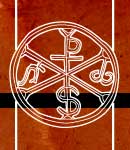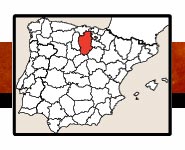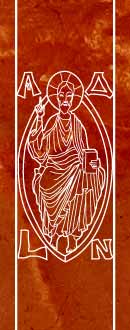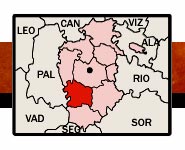 |
|
/SEM-20-sen-lib-E-25.jpg)
ARCHIVO DEL ADELANTADO
El Archivo del Adelantado de Covarrubias es un edificio del siglo XVI, mandado construir por Felipe II, fue archivo de documentación hasta que en el siglo XVIII sus documentos fueran mandados a Simancas. Hoy en día es Oficina de Información y Turismo y Biblioteca Municipal. El edificio aparece como una puerta (Puerta Real), reforzada con 4 contrafuertes y coronado con el escudo de Felipe II, con el torsión de oro.
VISITA: martes (10:30-14:00), miércoles a viernes (10:30-14:00 y 17:30-19:30), sábados (10:30-15:00 y 17:30-20:00) y domingos (10:30-15:00). |
|
/250-BUR-Cov-Arc-40.jpg) |
|
/SEM-20-sen-lib-I-25.jpg)
ARCHIVE OF EL ADELANTADO
The Archive of El Adelantado de Covarrubias is a 16th century building, built by Felipe II, was a file of documentation until in the 18 th cenury his documents were sent to Simancas. Today it is the Information and Tourist Office and Municipal Library. The building appears as a door (Puerta Real), reinforced with 4 buttresses and crowned with the shield of Felipe II, with the toison of gold.
VISIT: Tuesday (10,30 – 2,00), Wednesday to Friday (10,30 – 2,00 and 5,30 – 7-30), Saturdays (10,30 – 3,00 and 5,00-8,00 pm) and Sundays (10,30 – 3,00). |
|







/compl-burgos/BURG-Arl-Cov-40.jpg)
-55/BOOK-cort-40.jpg)


/compl-burgos/TT-BUR-arlcov-W-50.jpg)

/350-PLN-Covarr-50.jpg)
